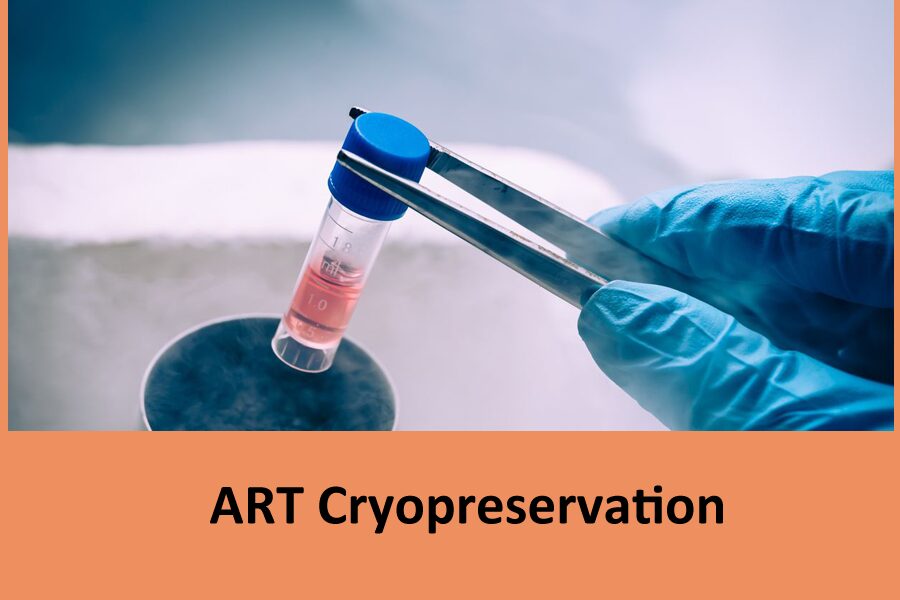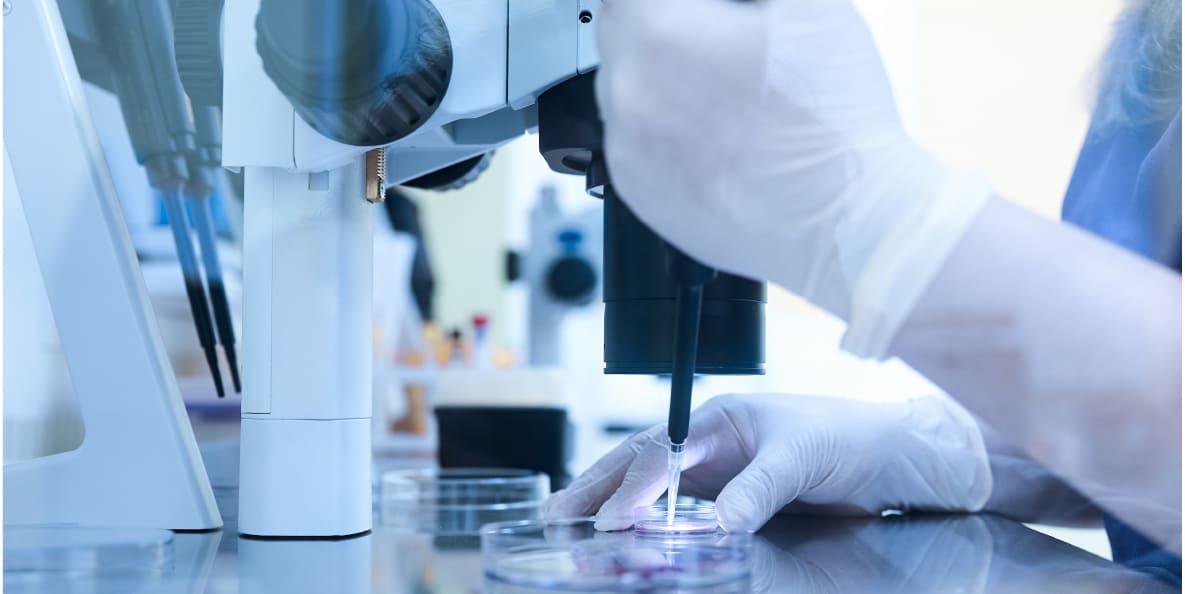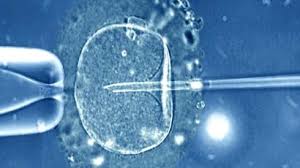ART Cryopreservation: What Is It and How Does It Work?

Ever thought about freezing cells, tissues, and even bodies at super-cold temperatures? Welcome to the fascinating world of cryopreservation. This process cools substances down to -80°C to -196°C. It can stop cellular activity and keep life on pause.
But how does it work, and what’s its use? Assisted Reproductive Technology (ART) has revolutionized the field of fertility treatments. One of the key components of ART is cryopreservation, a process that allows the freezing and storage of reproductive cells and embryos for future use.
This guide will delve into what ART cryopreservation is, how it works, and its benefits.
Get in touch for FREE SURROGACY CONSULTING:
Mobile: +91-8800481100 ( WhatsApp, Line, Viber)
Email: neelam@ivfconceptions.com
Web: www.completesurrogacy.com
Key Takeaways
- Cryopreservation uses ultra-low temperatures to halt cellular metabolism and preserve cells, tissues, and even entire bodies.
- It involves three key steps: placing the subject in an ice bath, replacing fluids with cryoprotectants, and slowly cooling to -200°C in liquid nitrogen.
- Cryopreservation has practical applications in research, healthcare, and even the future revival of preserved individuals.
- The ability to fully revive a cryogenically preserved human body remains a topic of scientific debate and speculation.
- Proper cryoprotectant usage and controlled freezing rates are crucial for successful cryopreservation and cell viability.
Additional Resources:
Everything You Need To Know (in 2023)
How Much Does Surrogacy Cost Using Family Member
Can My Insurance Provider Pay My Surrogacy Costs?
How Much Does Surrogacy Cost in the USA ( 2023)?
Surrogacy Costs Breakdown for Intended Parents
What Is Cryopreservation?
Cryopreservation is a way to keep cells, tissues, or organs alive by freezing them. It uses liquid nitrogen at −196°C to keep these biological samples safe for later use. This method helps keep their function and life for a long time.

Key Steps in Cryopreservation
The cryopreservation process has key steps:
- Gradual cooling: The material cools down slowly to avoid damage from ice crystals.
- Cryoprotective agents: Stuff like glycerol or dimethyl sulfoxide is added to prevent cells from drying out and protect against ice crystals.
- Ultra-low temperature storage: The frozen material is kept in liquid nitrogen or mechanical freezers at very low temperatures to stay alive for a long time.
In conclusion, cryopreservation is very important in healthcare and research. It helps with stem cell, reproductive, and organ preservation.
ART Cryopreservation
What Is ART Cryopreservation?
Cryopreservation is the process of cooling and storing cells, tissues, or organs at extremely low temperatures to maintain their viability. In the context of ART, cryopreservation typically involves the freezing of:
- Sperm: Collected from donors or male partners.
- Eggs (Oocytes): Retrieved from donors or female partners.
- Embryos: Created through in vitro fertilization (IVF).
Benefits of Cryopreservation
Flexibility: Allows individuals and couples to delay pregnancy until they are ready.
Increased Success Rates: Provides multiple opportunities for implantation and pregnancy.
Preservation of Fertility: Essential for individuals undergoing medical treatments that may affect fertility, such as chemotherapy.
The Cryopreservation Process
| Step | Process | Details |
| Step 1: Collection | Sperm Collection | – Usually obtained through ejaculation. – Can also be retrieved directly from the testes if necessary. |
| Egg Retrieval | – Involves ovarian stimulation to produce multiple eggs. – Eggs are retrieved through a minor surgical procedure. |
|
| Step 2: Freezing | Sperm Freezing | – Sperm is mixed with a cryoprotectant to protect cells during freezing. – Slowly cooled and then stored in liquid nitrogen. |
| Egg and Embryo Freezing | – Eggs and embryos are mixed with a cryoprotectant. – Rapidly cooled through a process called vitrification to prevent ice crystal formation. |
|
| Step 3: Storage | Long-Term Storage | – Stored in liquid nitrogen tanks at temperatures around -196°C. – Can be stored for many years without significant loss of viability. |
| Thawing and Usage | Thawing Process | – Thawing must be done gradually to prevent damage. – Cryoprotectant is carefully removed. |
| Viability Check | – Sperm, eggs, or embryos are assessed for viability post-thawing. |
Step 1: Collection
 Sperm Collection:
Sperm Collection:
- Usually obtained through ejaculation.
- Can also be retrieved directly from the testes if necessary.
Egg Retrieval:
- Involves ovarian stimulation to produce multiple eggs.
- Eggs are retrieved through a minor surgical procedure.
Step 2: Freezing
Sperm Freezing:
- Sperm is mixed with a cryoprotectant to protect cells during freezing.
- Slowly cooled and then stored in liquid nitrogen.
Egg and Embryo Freezing:
- Eggs and embryos are mixed with a cryoprotectant.
- Rapidly cooled through a process called vitrification to prevent ice crystal formation.
Step 3: Storage
Long-Term Storage:
- Stored in liquid nitrogen tanks at temperatures around -196°C.
- Can be stored for many years without significant loss of viability.
Thawing and Usage
Thawing Process
Careful Thawing:
- Thawing must be done gradually to prevent damage.
- A cryoprotectant is carefully removed.
Viability Check:
- Sperm, eggs, or embryos are assessed for viability post-thawing.
Usage in ART
Sperm: Used for intrauterine insemination (IUI) or IVF.
Eggs: Fertilized through IVF to create embryos.
Embryos: Transferred to the uterus during a subsequent IVF cycle.
Risks and Considerations
Survival Rates:
- Not all cells survive the freezing and thawing process.
- Success rates vary based on individual circumstances and the quality of the cells.
Legal and Ethical Issues:
- Regulations around storage duration and usage rights vary by country and clinic.
Challenges and Limitations
Cryopreservation has a lot of potential but also faces big challenges. Freezing and thawing can harm cells and tissues, making them less useful. There are also ethical and legal issues with preserving human bodies at very low temperatures.
- Potential for Cell Damage
The process of freezing and thawing can hurt cells. Ice forming inside cells can cause damage and make recovery hard. If not done right, it can also be expensive, slowing down progress in fields like medicine.
- Ethical and Legal Concerns
Freezing human bodies after death raises many ethical and legal questions. It’s not clear if we can bring back the dead, and it’s expensive. This makes people wonder about fairness and who can afford it.
Researchers are working hard to make freezing better and safer. New technologies like Ice Recrystallization Inhibitors could help cells recover better after thawing. As freezing technology gets better, solving these issues will be key to making it work well.
 Conclusion
Conclusion
Cryopreservation is a pivotal technology in the realm of assisted reproductive technology, providing flexibility and hope to many individuals and couples.
By understanding the process and benefits of cryopreservation, patients can make informed decisions about their fertility options.
Cryopreservation is a complex and fast-changing field with big potential in medicine and research.
It helps keep cells, tissues, and even organs safe at very low temperatures. This method is already key for saving stem cells, reproductive cells, and tissues for medical treatments and regenerative therapies.
If you’d like to learn more about IVF, Egg Donation, or surrogacy Consulting services globally, check out the rest of our website at IVF Conceptions. We offer legally secure and affordable surrogacy consNeelam Chhagani is inviting you to a scheduled Zoom meeting.
Our team has over 14 years of experience facilitating surrogacy arrangements, egg donation, and serving as an advocacy resource for infertile couples and LGBTQ individuals seeking to build families.
Till now we have helped and supported thousands of the intended parents with their family-building journey, and we can help you as well. Happy to share the references from the past IPs if needed.
If you’d like to learn more about IVF, Egg Donation, or surrogacy services globally, check out the rest of our website at Complete Surrogacy. We offer legally secure and affordable surrogacy consulting services for FREE.
Get in touch for FREE SURROGACY CONSULTING:
Mobile: +91-8800481100 ( WhatsApp, Line, Viber)
Email: neelam@ivfconceptions.com
Web: www.completesurrogacy.com

FAQs about Art cryopreservation
What is cryopreservation?
Cryopreservation is a way to keep cells, tissues, or even bodies at very low temperatures. It uses liquid nitrogen for this. The aim is to keep them from decaying until they can be brought back to life.
What are the key steps in cryopreservation?
The main steps are: (1) Cooling slowly to stop ice crystals from forming; (2) Using cryoprotective agents like glycerol to keep cells hydrated; and (3) Storing in liquid nitrogen or a super-cold freezer to keep it viable.
What are cryoprotective agents, and how do they work?
Cryoprotective agents, like glycerol and DMSO, prevent damage by filling cells with protective substances. This reduces ice formation. Vitrification is another method that quickly cools the sample to a glassy state, avoiding ice crystals.
What are the applications of cryopreservation?
Cryopreservation is used in medicine and research for many things. It helps preserve stem cells, embryos, eggs, and sperm for future IVF. It also stores tissues like heart valves and corneas for transplantation.
What are the challenges and limitations of cryopreservation?
Freezing and thawing can harm cells and tissues, lowering their effectiveness. There are also ethical and legal debates about freezing human bodies. The success of reviving a frozen person is still unknown.
What is the future of cryopreservation?
Researchers are working to improve cryopreservation. They’re looking for better cryoprotectants and better ways to cool and thaw. While reviving a frozen human is still a dream, new discoveries could make it possible in the future.
Source Links
- Cryopreservation Basics: Protocols and Best Practices for Freezing Cells
- What does cryopreservation do to human bodies?
- What Is Cell Cryopreservation? | Akadeum Life Sciences
- Cryopreservation and its clinical applications
- Cryopreservation
- Principles of cryopreservation – PubMed
- Principles of Cryopreservation
- American Society for Reproductive Medicine
- Cryopreservation in ART

 Conclusion
Conclusion